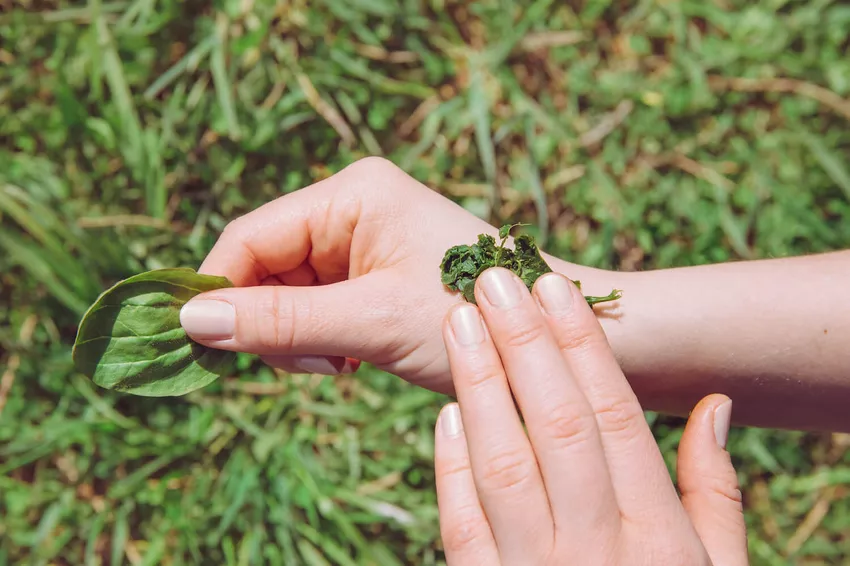Plantains can be found on every roadside. But the herb with the healing effect is often underestimated. We show what plantain has to offer.

Just last year, plantain (Plantago) was available again as a herb in some supermarkets. But what makes this plant so special that, on closer inspection, thrives in every meadow, along every roadside and in almost every country in the world?
Plantain: origin and properties
The genus of plantains (Plantago) is large and varied, and yet the small, inconspicuous plants attract only a few attention. They basically follow people wherever they go. The German name "Plantain" probably comes from the fact that plantains often grow along paths. An American indigenous population group even describes the plantain as "white man's footsteps" because it has been found on the American continent since the appearance of Europeans. And even the scientific name Plantago probably derives from the Latin "planta", which means something like the sole of the foot.
Plantains can be very different. They come in both herb and shrub form. What they all have in common, however, is their special leaves, whose leaf veins always run parallel to one another instead of being networked, as is usual with many plants. The most important species in Germany are medium plantain (Plantago media), ribwort plantain (Plantago lanceolata) and broad plantain (Plantago major) ) can be easily recognized by the fact that all the leaves are arranged in a rosette directly on the ground. Plantains are found in different species all over the world. We present the most important ones below.

Plantain species
Although there are probably around 190 species of plantains, we know of two species in particular: the buckhorn plantain and the broad-leaved plantain. Both species originate from Europe or Eurasia and are now distributed worldwide. At least for most Europeans, these two arethe epitome of a plantain: both species are extremely adaptable and robust. In Europe, however, there are a few other species such as the common plantain or specialists such as the sea plantain (Plantago maritima) and the mountain plantain (Plantago atrata ). However, there are a wide variety of plantain species worldwide, including in Asia, America and Africa.
Plantain
Plantain is a valuable medicinal herb that can be very useful on the go, for example in the case of insect or nettle bites. It grows along many paths around the world and can make running on those paths much easier. Ribwort plantain provides relief from blisters and injuries on the foot. You can find out more about this wonderful medicinal plant here.
Plantain
The broadleaf plantain is a close relative of the buckhorn plantain. The very tread-tolerant plant has the same healing properties as this one. But the two plants are also very similar in appearance. Here you can find out how you can tell the two types of plantain apart and what else there is to know about plantain.

Grow plantain
Both plantain and plantain are very robust plants. No wonder, because their habitat is along paths where they are not just literally trampled on. Both species love a sunny location and slightly acidic soil. After the plants have grown sufficiently, they can be harvested. You can find more information about the cultivation of plantain in our variety articles on ribwort and broadleaf plantain.
Propagating plantain
Plantain usually multiplies quite well on its own if it likes the location. If you want to successfully settle it, it is best to collect the ripe seeds of the plantain and sow them. Older plantains also propagate via cuttings, of which you can use one or two to start your plantain cultivation. You can find out exactly how to do this in the respective variety articles.

Plantain care
Plantain and plantain are extremely successful. They managed to conquer the world and spread across it. This fact alone shows how undemanding and adaptable both species are. So rest, because the plantainmostly taking care of herself.
Harvesting and storing plantain
You can harvest the leaves of the plantain one by one, one leaf here, one leaf there. But the radical variant is also possible, namely simply cutting it back completely. Don't worry, it will sprout fresh and reward the pruning courage with the sprout of young, tender leaves. When harvesting the leaves, be careful not to pick old leaves. These tend to be chewy and not very pleasant to eat. You can store the leaves dried or in processed form. After flowering, you can also harvest the ripe seeds and even the roots in the fall.

Plantain: ingredients and use
The two medicinal plants buckhorn and broadleaf plantain have been known for a long time. The contained mucilage helps with attacked mucous membranes and the silicic acid strengthens the tissue. The aucubin also contained has an anti-inflammatory effect and also soothes irritation.

Together, all of these ingredients result in the perfect mix and have turned plantain and plantain into two very versatile medicinal plants. Both types have the same effect and application, but the healing effect of buckhorn is slightly greater than that of plantain. You can also find out more about their use in cooking and medicine in our articles on plantain and plantain.